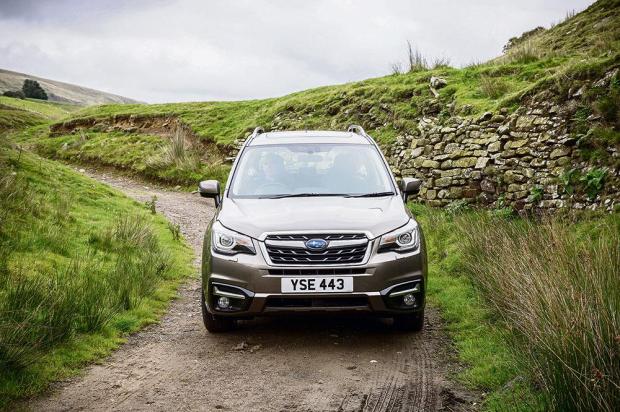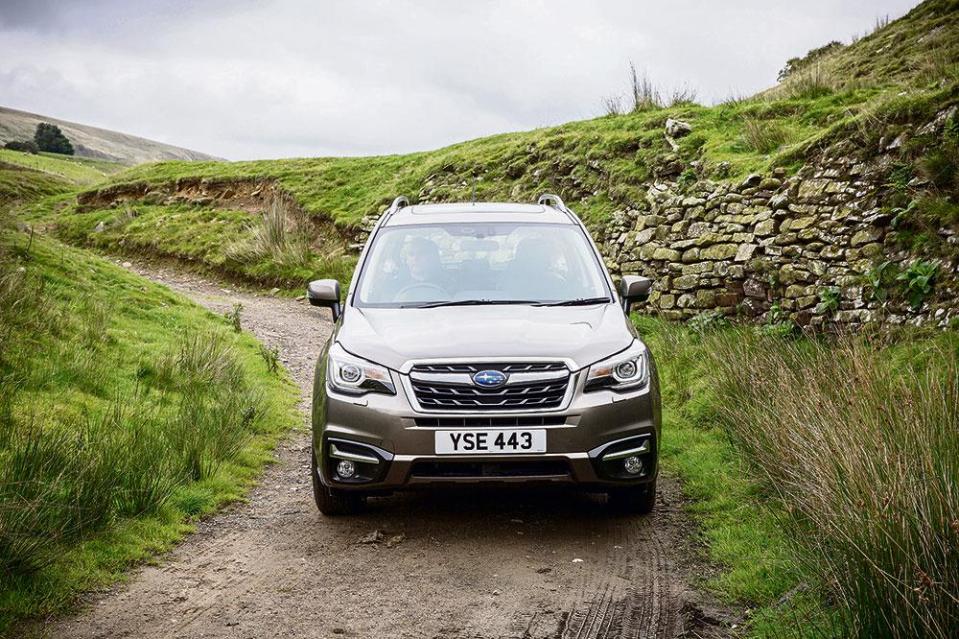We review the Subaru Forester from price to economy and all its features

IT’S not often a car brand says: “We don’t want to be thought of as the producer of the greatest ever rally car.
“Instead we want to be famous for our sensible 4x4s beloved by farmers and horsey types all over rural Britain.”
Right.
No longer content to trade on the fact that they created the Impreza
Subaru is no longer content to trade on the fact that they created the Impreza (now known as the WRX STi) — the legendary rally car which, in the hands of the equally legendary Colin McRae, was unbeatable in WRC.
A car that can still be found filling up McDonald’s car parks of a Friday evening and dragging the strips of seaside towns. Which still hangs on the bedroom wall of any kid with even a passing interest in motorsport, and which makes the hair on the back of your neck stand on end when you hear its unmistakable turbo hiss down Brentwood High Street.
As much as I’d love to spend the next 600 words writing about that car, I take their point.
Key Facts
- Price: £26,995
- Engine: 2 litre turbo
- Economy: 49.6mpg
- 0-62mph: 9 secs
- Top speed: 118mph
- Length: 4.6 metres
- CO2: 148g/km
Subaru isn’t crowned by the blue gravel sprayer with gold wheels. Its greatest achievement is actually creating an entire range of possibly the most capable, go-anywhere production off-roaders on the market.
Under a new marketing team, it found a way of getting the message across — and let a load of me-types loose in their AWDs on an off-road course in rain-battered Lincolnshire.
The course comprised multiple engine block-deep water crossings, gnarly gullies, quagmires so rugged you’d end up knee-deep in mud if you jumped out, and an against-the-current river drive. So, testing stuff.
Subaru’s AWD range consists of the Levorg, a family saloon, the Outback, a crossover (which they say was the first ever) and the XV and the Forester — both full-blooded SUVs.
So something for everyone. But they all share the same DNA, certain characteristics which make them virtually unstoppable. It just depends which guise you want it in.
They’re deeply proud of their Boxer engine, which gets its name from the fact that the pistons work in a punch, counter punch movement, so horizontally rather than vertically.
It reduces engine shudder and powers the moving parts much more efficiently, being directly connected to the drivetrain.
But — and this is why it’s extra important in a 4x4 — it can sit lower and deeper in the car, creating a far better centre of gravity. And what’s important when you’re wobbling over an acutely vertical mountain of muck and mud? Balance.
I’ve driven a few 4x4s over rough terrain, but I’ve never been as impressed as I was with the Subarus
The all-wheel drive system senses when one wheel is slipping, which makes the others kick in harder, countering spin and stopping oversteer or understeer.
On the course, it never missed a beat. As the traction was lost momentarily, you could feel the car working to dig in, and you’d be away over the mud in seconds.
I’ve driven a few 4x4s over rough terrain, but I’ve never been as impressed as I was with the Subarus — particularly the Forester, its most popular model which accounts for a third of sales.
Here’s the most impressive part — every single car that was taken out on the course (no one lost it or got stranded) was running on Yokohama Geolanders road tyres.
So Subarus are ready to drive virtually anywhere at any time, no need to change the footwear.
While they aren’t the prettiest cars, especially inside (kinda remind me of an early 2000s Toyota), for anyone who may need to tackle tricky terrain, Subaru is the brand to think of.
If it was good enough for McRae, it’s good enough for me.





